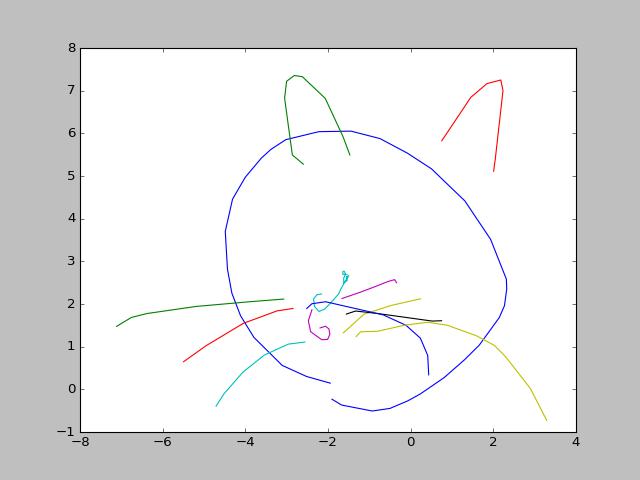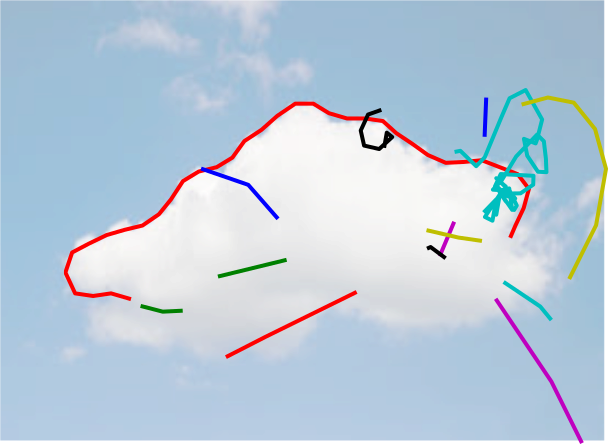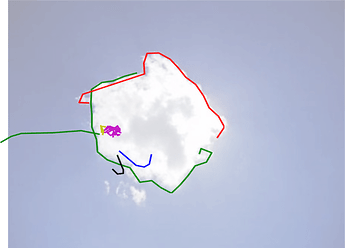Hi I was looking at your code and I tried to run the cod on Jupyter notebook.
Still it seems to me that it doesn’t operate because at this part
if __name__=="__main__":
model = Model()
for epoch in range(50001):
model.train(epoch)
I have an error saying
epoch 0 loss 2.6120107173919678 LR 2.6110057830810547 LKL 0.0010049500269815326
<ipython-input-17-a948bd699ee2>:36: UserWarning: Implicit dimension choice for softmax has been deprecated. Change the call to include dim=X as an argument.
pi = F.softmax(pi.transpose(0,1).squeeze()).view(len_out,-1,hp.M)
<ipython-input-17-a948bd699ee2>:42: UserWarning: Implicit dimension choice for softmax has been deprecated. Change the call to include dim=X as an argument.
q = F.softmax(params_pen).view(len_out,-1,3)
<ipython-input-31-a793444e3f37>:66: UserWarning: torch.nn.utils.clip_grad_norm is now deprecated in favor of torch.nn.utils.clip_grad_norm_.
nn.utils.clip_grad_norm(self.encoder.parameters(), hp.grad_clip)
<ipython-input-31-a793444e3f37>:67: UserWarning: torch.nn.utils.clip_grad_norm is now deprecated in favor of torch.nn.utils.clip_grad_norm_.
nn.utils.clip_grad_norm(self.decoder.parameters(), hp.grad_clip)
---------------------------------------------------------------------------
TypeError Traceback (most recent call last)
<ipython-input-33-1aab3c2e5ccc> in <module>
2 model = Model()
3 for epoch in range(50001):
----> 4 model.train(epoch)
<ipython-input-31-a793444e3f37> in train(self, epoch)
78 if epoch%100==0:
79 #self.save(epoch)
---> 80 self.conditional_generation(epoch)
81
82 def bivariate_normal_pdf(self, dx, dy):
<ipython-input-31-a793444e3f37> in conditional_generation(self, epoch)
142 hidden_cell = (hidden, cell)
143 # sample from parameters:
--> 144 s, dx, dy, pen_down, eos = self.sample_next_state()
145 #------
146 seq_x.append(dx)
<ipython-input-31-a793444e3f37> in sample_next_state(self)
180 sigma_y = self.sigma_y.data[0,0,pi_idx]
181 rho_xy = self.rho_xy.data[0,0,pi_idx]
--> 182 x,y = sample_bivariate_normal(mu_x,mu_y,sigma_x,sigma_y,rho_xy,greedy=False)
183 next_state = torch.zeros(5)
184 next_state[0] = x
<ipython-input-32-7b287d68c95c> in sample_bivariate_normal(mu_x, mu_y, sigma_x, sigma_y, rho_xy, greedy)
8 cov = [[sigma_x * sigma_x, rho_xy * sigma_x * sigma_y],\
9 [rho_xy * sigma_x * sigma_y, sigma_y * sigma_y]]
---> 10 x = np.random.multivariate_normal(mean, cov, 1)
11 return x[0][0], x[0][1]
12
mtrand.pyx in numpy.random.mtrand.RandomState.multivariate_normal()
TypeError: ufunc 'add' output (typecode 'O') could not be coerced to provided output parameter (typecode 'd') according to the casting rule ''same_kind''
Would you mind if you help me out with this?




